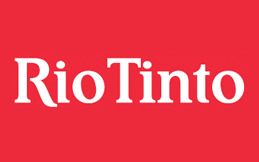Rio Tinto and China’s Sinosteel Corporation have agreed to extend their historic Channar Mining Joint Venture.
This third extension of the joint venture, confirmed in Beijing by Rio Tinto chief executive J-S Jacques and Sinosteel chairman Xu Siwei, will see an additional 10 million tonnes of iron ore delivered into the joint venture from Western Australia.

Rio Tinto Iron Ore chief executive Chris Salisbury said “The Channar joint venture is one of Australia’s most significant trading partnerships and has helped pave the way for the incredibly strong relationship we have forged with China today. This extension represents another milestone in our 30-year partnership that has seen more than 250 million tonnes of iron ore delivered from the Pilbara to China.”
The extension will see Sinosteel make an upfront payment of US$15 million to Rio Tinto as well as production royalties linked to the iron ore price. It is conditional upon approvals from the Western Australian, Australian and Chinese governments.
The original Channar joint venture was signed in 1987 and provided for the production of 200 million tonnes of iron ore. This third extension will increase the life of the joint venture to cover production totalling 290 million tonnes.
The Channar joint venture (Rio Tinto share 60 per cent, Sinosteel share 40 per cent) owns the Channar mine in the Pilbara region of Western Australia. The mine is managed by Rio Tinto and the joint venture agreement provides Sinosteel with off-take rights for a volume of Pilbara Blend (into which Channar ore feeds) equivalent to Channar production.
Sinosteel Corporation is considered to be a related party of Rio Tinto plc under UK Listing Authority rules. This extension of the Channar joint venture is a smaller related party transaction, falling within UK Listing Authority listing rule 11.1.10R.
To ensure that the extension of the Channar joint venture falls within the UK Listing Authority‘s ‘smaller related party transactions’ regime (under listing rule 11.1.10R), the production royalties are subject to a maximum cap of US$250 million, which is believed to provide significant headroom over a wide range of iron ore price scenarios.
